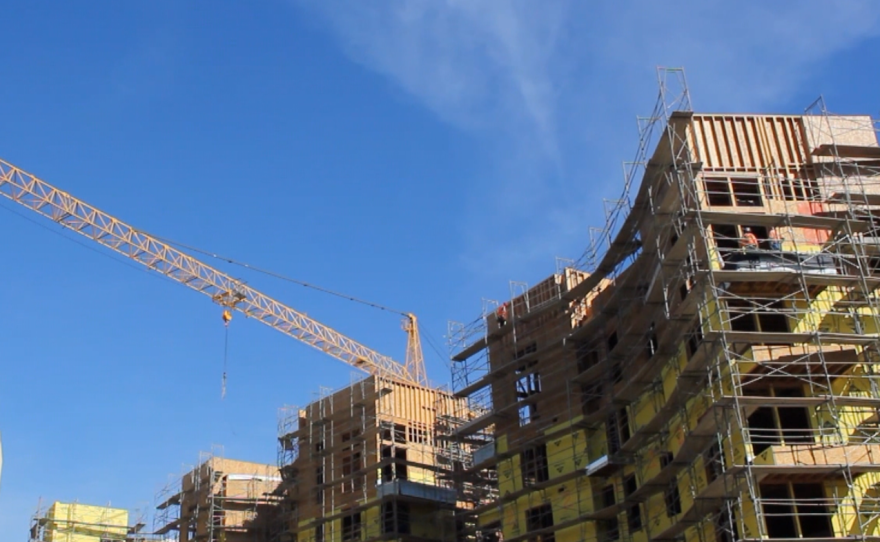Board members of the San Diego Association of Governments on Friday voted to ask state officials to set a lower bar for housing production in the county, reflecting a resistance among elected officials to allow for more homes to be built despite a crippling housing crisis.
The Regional Housing Needs Assessment, or RHNA, is a state-mandated program that requires cities and counties to plan for enough homes to accommodate their expected population growth. The state has asked SANDAG to plan for more than 171,000 new homes to be built in the county between 2021 and 2029.
SANDAG staffers had recommended asking the state for lower housing production goals "to better reflect realistic conditions in the region." The housing goals are rarely met in any region of California — every city in San Diego County, except for Lemon Grove, is failing them. The county is nearing its 2020 deadline for the current cycle of housing goals, but governments have permitted less than a third of the homes allowed for in their current plans.
State officials may ignore SANDAG's request and still demand the higher housing goals.
Maya Rosas, director of policy for the smart-growth advocacy nonprofit Circulate San Diego, said her organization was disappointed by Friday's vote.
"A vote to reduce the number of homes the region is required to accommodate does not reduce the need for homes for San Diego families," she said in an email. "Today's action only makes it harder for the region to grow and to retain its families and workforce."
RELATED: Five Reasons California's Housing Costs Are So High, With Charts and Graphs
Experts and politicians from across the political spectrum agree California's housing crisis is due in large part to a severe shortage of homes, leading to low vacancy rates, rising rents and a highly competitive market for homebuyers. The state has a booming economy and a growing population, but ranks 49th in the country in terms of housing production per capita.
The board ultimately split in its vote to ask for the lower housing goals. But the outcome of the vote could have gone differently had board members invoked a new voting procedure made possible under a state law passed last year.
That law, AB 805, aimed to make SANDAG voting procedures more democratic by giving a greater say to the representatives of cities with larger populations. Supporters of the law complained that tiny towns such as Del Mar got equal representation on the board as cities such as Chula Vista, which has more than 62 times Del Mar's population.
RELATED: MTS Parking Lots Could Be Key To San Diego Housing Crisis
AB 805 allows board members to call for a "weighted" vote, whereby their votes are weighted to their jurisdiction's population size. That weighted vote can override the simple tally vote of each board member.
The motion to ask the state for lower housing goals passed with 67 percent of the board members' "yes" votes. Had a weighted vote been called, the motion could have failed because the board members supporting the more ambitious housing goals appeared to represent a majority of the county's population.
The SANDAG board is made up of 21 mayors, city council members and county supervisors. Each city has a seat on the board, with the city and county of San Diego having two seats.
Two board members — County Supervisor Ron Roberts and San Diego City Council President Myrtle Cole — did not vote on Friday's motion because they are "secondary" board members for their jurisdictions. Their votes are only counted in a weighted vote.
The SANDAG board's decision Friday went against a recommendation from the agency's Regional Planning Committee, which voted to accept the state's housing goals.






